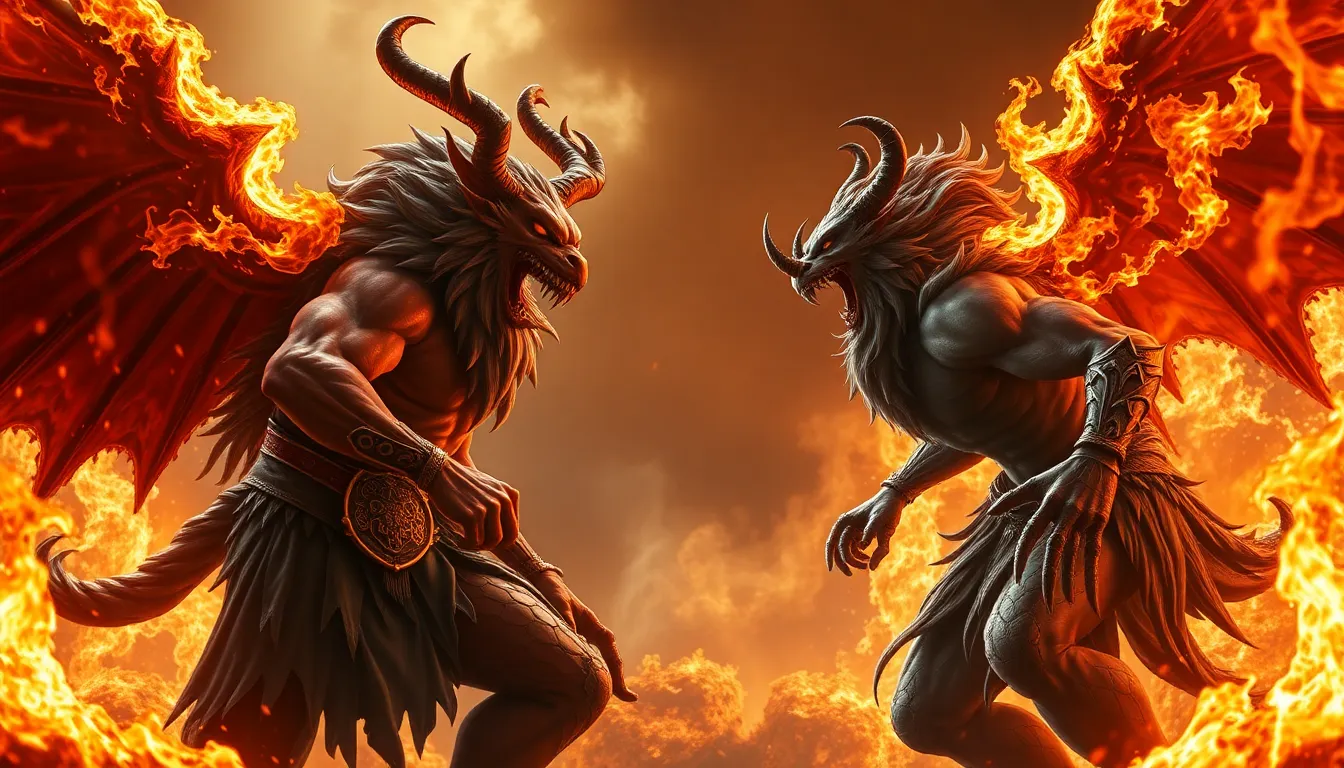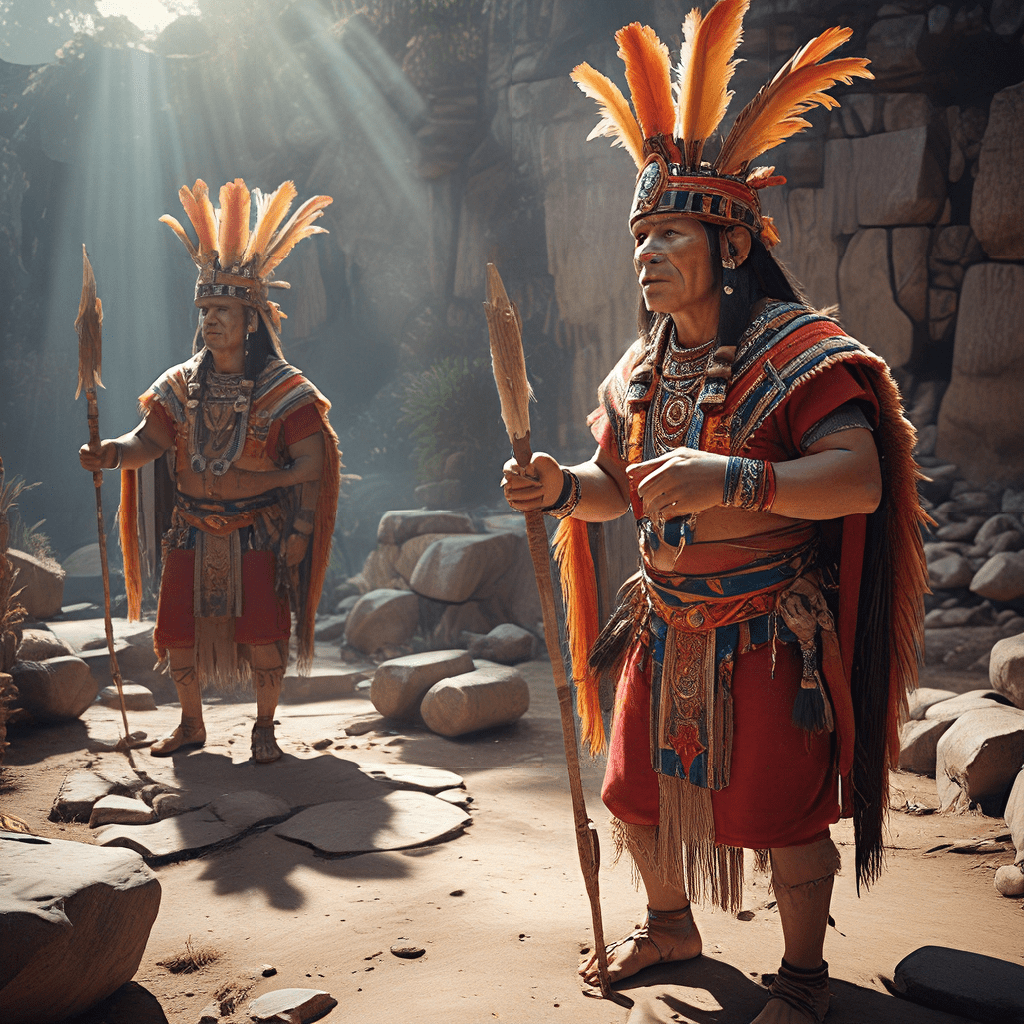The Peryton and the Valkyries: A Norse Mythological Connection
I. Introduction
Norse mythology is a rich tapestry of tales and characters that has fascinated people for centuries. It encompasses a wide array of beings, from gods and giants to mythical creatures that embody the natural and supernatural worlds. Among these, the Peryton and the Valkyries stand out as intriguing figures that spark curiosity and imagination.
The Peryton, a creature often depicted as a hybrid of a deer and a bird, is less known compared to the Valkyries, who are renowned as warrior maidens serving Odin, the chief of the Norse gods. This article aims to explore the connections between these two mythical beings, shedding light on their characteristics, symbolism, and the themes they represent in Norse mythology and beyond.
II. Understanding the Peryton
A. Description and characteristics of the Peryton
The Peryton is described as a creature with the body of a deer and the wings and head of a bird, resembling a stag with feathers. Its unique appearance symbolizes a fusion of terrestrial and aerial elements, embodying both grace and strength. The creature is often depicted as having a shadow that resembles a human, which adds a layer of mystery to its character.
B. Origins of the Peryton in mythology
The Peryton is not originally a Norse mythological figure; instead, it appears in various forms in medieval literature and folklore. Its first known mention can be traced back to the works of the 19th-century writer, Jorge Luis Borges, who included it in his fictional Book of Imaginary Beings. Nevertheless, the Peryton has since captured the imagination of those who delve into mythological studies.
C. Symbolism and significance of the Peryton in various cultures
In different cultures, the Peryton can symbolize:
- Transformation: The hybrid nature of the Peryton suggests themes of change and adaptability.
- Duality: Its combination of earth and sky elements represents the balance between two realms.
- Spirituality: The Peryton’s connection to both the physical and spiritual worlds highlights its role as a bridge between them.
III. The Valkyries: Guardians of Fate
A. Description and roles of the Valkyries in Norse mythology
The Valkyries are depicted as fierce warrior maidens who choose those who may die and those who may live in battles. Serving Odin, they are responsible for escorting the souls of fallen warriors to Valhalla, the hall of the slain, where these warriors prepare for Ragnarok, the end of the world. Valkyries embody strength, bravery, and the spirit of war.
B. The Valkyries’ connection to battle and the afterlife
In Norse lore, the Valkyries are not just arbiters of death; they also represent the honor and glory associated with valor in battle. Their role is crucial in determining the fate of warriors, indicating that bravery leads to eternal reward in the afterlife. This connection to death and destiny makes them pivotal figures in Norse cosmology.
C. Cultural depictions of Valkyries in art and literature
Valkyries have been depicted in various forms of art and literature, such as:
- Viking sagas: Tales that recount their heroic deeds and choices in battle.
- Operas: Richard Wagner’s “Die Walküre” famously features Valkyries, blending their warrior spirit with dramatic music.
- Modern literature: Valkyries appear in fantasy novels and comics, often reimagined as powerful female characters.
IV. Mythological Connections Between the Peryton and Valkyries
A. Comparative analysis of the Peryton and Valkyries’ characteristics
While the Peryton and Valkyries come from different mythological backgrounds, they share some intriguing characteristics:
- Hybrid Nature: Both represent a blend of elements—physical and ethereal, terrestrial and celestial.
- Symbolism of Flight: The ability to fly connects them to freedom and transcendence.
- Guardianship: Both serve as protectors in their own right—the Peryton as a guardian of the spirit and the Valkyries of the warrior’s fate.
B. Thematic parallels: flight, fate, and transformation
Themes of flight, fate, and transformation run deeply through the narratives of both beings. The Peryton’s flight signifies spiritual elevation, while the Valkyries’ role in choosing the slain illustrates the control over fate. Both embody transformation—from life to death, from earth to sky—showcasing the interconnectedness of existence.
C. The role of animals in Norse mythology
Animals play a significant role in Norse mythology, often symbolizing various traits and characteristics. The Peryton, as a hybrid creature, reflects the importance of animal symbolism in understanding the complexities of both the physical and spiritual realms. Similarly, Valkyries can be associated with horses and ravens, further intertwining the animal kingdom with human fate.
V. Peryton and Valkyries in Modern Culture
A. Representation in modern literature and media
In contemporary literature and media, both the Peryton and Valkyries have found new life:
- Fantasy novels: Writers often draw upon these figures to create rich, imaginative worlds.
- Video games: Many games incorporate Valkyries and creatures like the Peryton, enhancing gameplay with mythological elements.
- Television series: Shows exploring Norse themes often feature Valkyries as central characters in epic narratives.
B. Influence on popular culture and gaming
The influence of these mythological figures extends into popular culture, where they are reinterpreted and adapted:
- Merchandising: Valkyries are popular in collectibles and themed merchandise.
- Graphic novels: The Peryton’s unique characteristics make it an appealing figure for graphic storytelling.
- Cosplay: Mythological figures inspire fans to create costumes and embody these characters at conventions.
C. Contemporary interpretations and adaptations
Modern interpretations of the Peryton and Valkyries often challenge traditional notions, presenting them as symbols of empowerment, agency, and transformation. This evolution reflects contemporary values and the ongoing fascination with mythology as a means of exploring identity and existence.
VI. Cross-Cultural Comparisons
A. Similar mythical creatures and figures in other cultures
Many cultures have their own versions of hybrid creatures and warrior figures, such as:
- Griffins in Greek mythology: Similar to the Peryton, griffins are hybrids of lion and eagle.
- Amazon warriors in Greek mythology: Like the Valkyries, they are fierce female warriors.
- Chimeras in various myths: Representing the blending of different beings, much like the Peryton.
B. The significance of animal-human hybrids in mythology
Animal-human hybrids often embody complex themes, including:
- The balance between civilization and nature.
- The exploration of duality within human existence.
- Connections to the divine or supernatural forces.
C. How the Peryton and Valkyries fit into a global mythological context
Both the Peryton and Valkyries serve as examples of how different cultures interpret similar themes through unique lenses. They reflect universal human experiences of courage, transformation, and the quest for meaning in life and death.
VII. The Legacy of the Peryton and Valkyries
A. Lasting impact on modern storytelling and mythology
The Peryton and Valkyries have left an indelible mark on modern storytelling. Their narratives continue to inspire writers, artists, and creators, who draw upon their rich symbolism and complex characteristics to weave new tales that resonate with contemporary audiences.
B. Exploration of the themes of courage and destiny
The exploration of courage and destiny is particularly relevant today. Both the Peryton and Valkyries serve as reminders of the importance of bravery in the face of challenges and the inevitable nature of fate. Their




